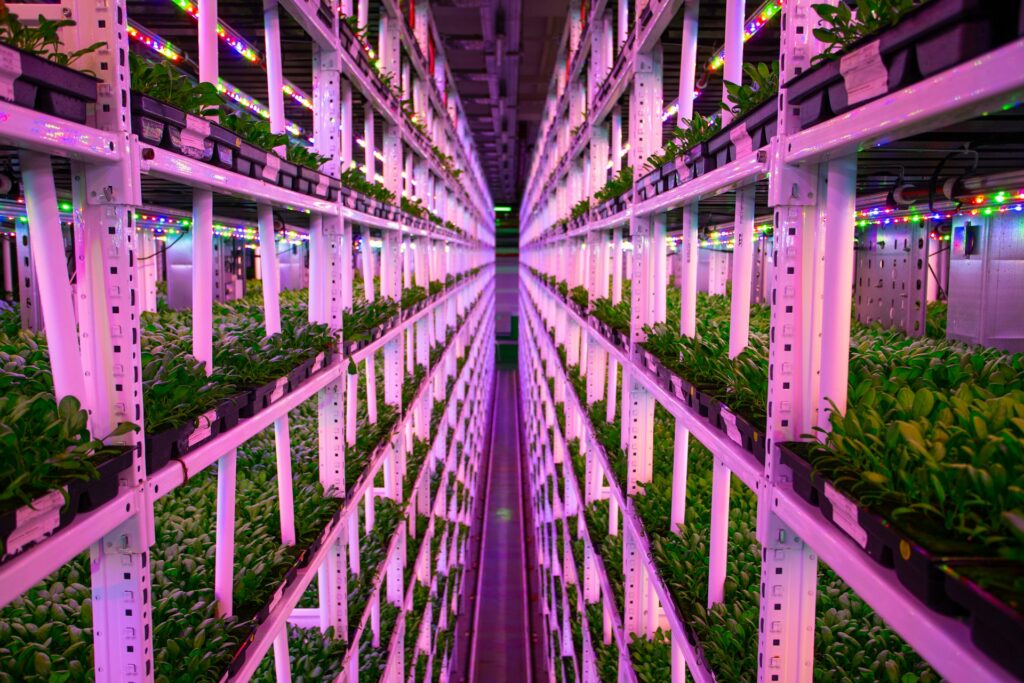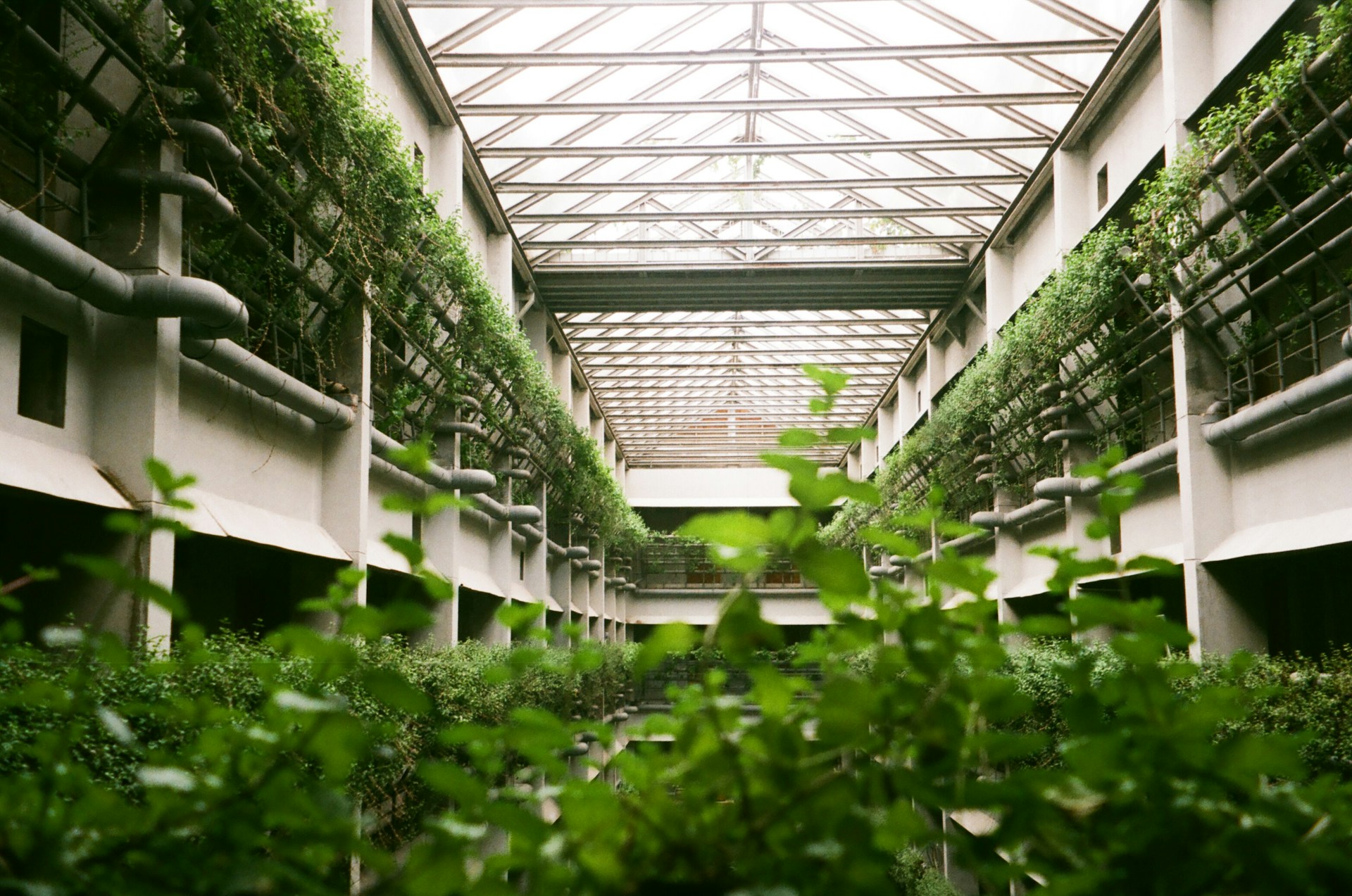Vertical Farming: Feeding Urban Populations Sustainably
The rising numbers of urban dwellers intensify their demand for fresh nutritious food.
The drawbacks in traditional farming exist because current agricultural methods fail to satisfy growing food needs because of diminished land availability alongside climate change and environmental limitations.
Through vertical farming cities address their food-growing needs by utilizing minimal facility area and resources.
This blog analyzes vertical farming sustainability for city food supply while exploring both benefits and challenges to widespread implementation.
The Rise of Vertical Farming: A Sustainable Solution
Modern agricultural systems known as vertical farming stack crops through controlled facilities including buildings and storage units for vertical operation of cultivation.
Hydroponics, together with aeroponics, combined with artificial lighting makes this process possible to produce food throughout the entire year with reduced requirements of both land and water resources.
Key Benefits of Vertical Farming
1. Efficient Land Use
The need for extensive land usage in agricultural care continues to grow as urban territories run out of suitable areas.
Vertical farms combine different crop levels through their design which expands output density thus enabling food production capacity within busy urban areas.
2. Reduced Water Consumption
Vertical farming’s hydroponic and aeroponic systems enable efficient water conservation because they recycle water to minimize water consumption by 95%.
The system functions as a prime answer for locations dealing with inadequate water resources.
3. Year-Round Crop Production
This farming operates inside controlled environments that produce food supplies non-stop regardless of any weather conditions that affect traditional farms.
4. Minimal Pesticide Use
Vertical farms operate indoors so they encounter lesser pest outbreaks and diseases which decreases chemical pesticide requirements.
The controlled environment produces healthier and environmentally sustainable food products.
5. Reduced Transportation Costs and Emissions
The practice of city-based food cultivation cuts down transportation distance which leads to lower environmental pollutants while delivering produce in better condition to consumers.
How Vertical Farming Supports Urban Food Security
The expanding urbanization trend has turned food security into a primary urban issue.
Multiple vertical farming strategies can boost citywide food security through environmentally friendly operational methods.
1. Cities obtain fresh and nutritious ingredients through local sources
People living in urban areas frequently depend on imported food although this food frequently experiences nutritional decline during transportation.
Vertical farms position food production at consumer distances so people receive fresh nutritious foods.
2. Reducing Dependence on Traditional Agriculture
Traditional farming methods face danger from environmental changes along with soil destruction and changing climate conditions in addition to unreliability in weather patterns.
This farming enables sustainable operations because it eliminates the usual farming demands needed to manage agricultural systems.
3. Supporting Local Economies and Job Creation
These farming operations in city zones create three sectors of agricultural personnel plus technical and logistic support teams which boost economic strength in the region.
4. Disaster Resilience and Food Stability
Urbaneness makes cities susceptible to supply chain interruptions which occur from natural disasters alongside pandemics and geopolitical events.
These farming systems function as dependable sources for locally produced food that decreases the probability of food scarcity.

Challenges and Future Prospects of Vertical Farming
This kind of farming needs all existing challenges to be solved before reaching full scale implementation.
1. High Initial Investment and Energy Costs
Building startup vertical farms demands large financial investments for constructing infrastructure as well as expenses for lighting and climate control equipment.
The use of artificial lighting in vertical farms raises sustainability issues because it boosts overall energy use.
2. Limited Crop Variety
Vertical farms can efficiently cultivate leafy greens as well as herbs and some fruits yet they fail to accommodate staple crops because space constraints and resource limitations prevent growth of wheat and rice and corn.
After continuous improvement of production competence different agricultural crops need their focus to stay important.
3. Technological Advancements Needed
Research and development performs critical roles in putting forward artificial intelligence combined with smart sensor automation systems that establish practical and economical vertical farming solutions.
4. Public Awareness and Policy Support
Vertical farming technology remains unfamiliar to most policymakers along with many consumers.
Through enhanced awareness programs and appropriate government backing together with incentives vertical farming will achieve its widespread implementation as a sustainable practice.
Conclusion
Vertical farming serves as an effective solution that advances both city food security and environmentally sustainable practices.
This system demonstrates potential to change urban food systems through space optimization while preserving water resources while cutting down agricultural needs.
Vertical farming’s implementation needs technological improvements along with government backing to become an established part of urban food production and achieve sustainability across urban areas.
FAQ
1. Do vertical farms have any constraints regarding crop variety?
Vertical farming operations focus on producing leafy greens together with herbs while also cultivating small strawberry varieties.
Scientists continue their studies to develop a broader range of agricultural products from grains and vegetables to secure food supply for communities.
2. Vertical farming systems help decrease environmental impact through what mechanism?
Vertical agriculture saves land resources while reusing water supplies and eliminates the requirement for chemical fungicides.
The practice shortens food transportation routes thereby reducing environmental carbon pollution.
3. Will vertical farming systems achieve financial profitability for substantial food production operations?
Present-day technological progress with automation alongside renewable energy solutions and improved growing techniques lowers the total cost of vertical farming operations.
New technological advancements indicate that vertical farming will become a normal method for sustaining urban food production.
Also read: The Role of Urban Farming in Feeding Growing Populations

